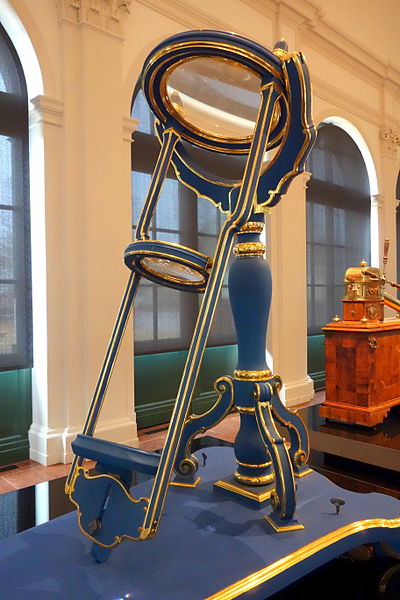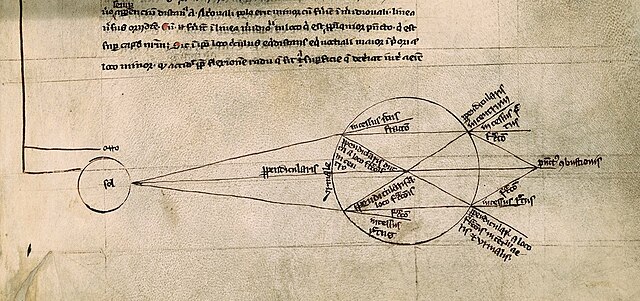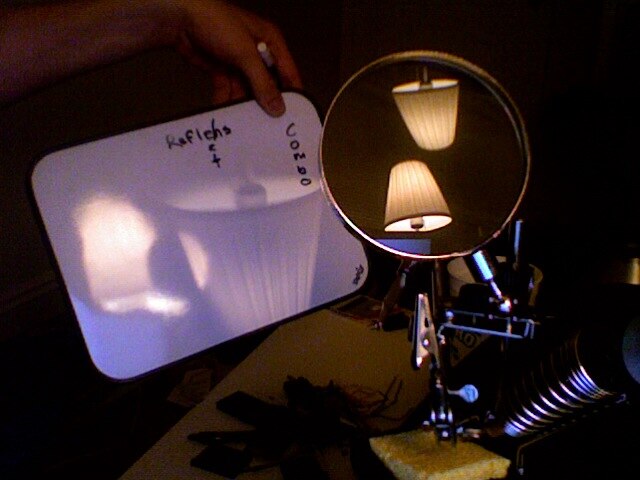A burning glass or burning lens is a large convex lens that can concentrate the sun's rays onto a small area, heating up the area and thus resulting in ignition of the exposed surface. Burning mirrors achieve a similar effect by using reflecting surfaces to focus the light. They were used in 18th-century chemical studies for burning materials in closed glass vessels where the products of combustion could be trapped for analysis. The burning glass was a useful contrivance in the days before electrical ignition was easily achieved.
A replica (on a smaller scale) of the burning lens owned by Joseph Priestley, in his laboratory
1658 illustration depicting the sun's rays being focused to start a fire
Close-up view of a flat Fresnel lens. This thin, lightweight, non-fragile and low-cost lens can be used as burning-glass in emergency situations.
A makeshift burning glass, using the eyepiece of a telescope, being used to burn a leaf.
A lens is a transmissive optical device that focuses or disperses a light beam by means of refraction. A simple lens consists of a single piece of transparent material, while a compound lens consists of several simple lenses (elements), usually arranged along a common axis. Lenses are made from materials such as glass or plastic and are ground, polished, or molded to the required shape. A lens can focus light to form an image, unlike a prism, which refracts light without focusing. Devices that similarly focus or disperse waves and radiation other than visible light are also called "lenses", such as microwave lenses, electron lenses, acoustic lenses, or explosive lenses.
A burning apparatus consisting of two biconvex lens
Light being refracted by a spherical glass container full of water. Roger Bacon, 13th century
Lens for LSST, a planned sky surveying telescope
Real image of a lamp is projected onto a screen (inverted). Reflections of the lamp from both surfaces of the biconvex lens are visible.








